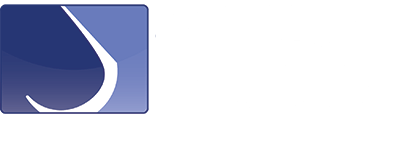The good news is that some of the risk factors mentioned in the previous section can be modified in order reduce the risk of breast cancer.
General Lifestyle
- Avoid becoming overweight after the menopause.
- Expose your skin adequately to sunshine or take vitamin D3 supplements.
- Undertake regular exercise and increase physical activity (min. 1 hour per week).
- Avoid excessive alcohol intake – try not to drink more than 6 units of alcohol per week (equivalent to one glass of wine per day).
- Reduce the intake of animal fat and red meat (esp. overcooked red meat)
- Eat more fish (preferrably wild)
- Replace full-fat dairy products with low-fat dairy products
- Increase the intake of fresh fruits and vegetables especially: cranberries, raspberries, cherries, red grapes, and pomegranates. These fruits can be also taken as fresh juice drinks with no added artificial ingredients (e.g. fresh smoothies).
- Increase the intake of green tea.
- Increase the intake of olive oil.
Comment: There is no credible scientific evidence that underarm cosmetics and low-fat dairy products increase the risk of developing breast cancer. Soya products seem to be neutral i.e. they cause neither harm nor benefit regarding breast cancer.
Hormonal
- Avoid taking HRT after the menopause and try to usesafest preparations or alternatives to HRT.
- Try to have your first child before the age of 30 years and avoid pregnancy after the age of 40 years.
Other Ways (for Women at High Risk)
- Anti-oestrogen drugs, such as tamoxifen (a breast cancer drug) and raloxifene (used to protect post-menopausal women from developing osteoporosis), have been shown to reduce the risk of breast cancer by 50–75%. they have not been shown to improve survival. These drugs can be recommended for breast cancer prevention in selected women at high risk of developing breast cancer.
- Preventative mastectomy (removal of the whole breast) seems to reduce the risk of breast cancer by 90% in high-risk women, such as those who carry breast cancer genes such as BRCAI, BRCA2 and PALB2. Oophorectomy also decreases the risk of developing breast cancer in BRCA-1 and BRCA-2 gene carriers.
- Recent research suggests that aspirin-like drugs, statins and metformin, may reduce the risk of developing breast cancer. However, further research is needed before these drugs can be recommended for breast cancer prevention.
- Drugs which inhibit estrogen production by peripheral tissue know as aromatase have been found to be better than tamoxifen in preventing breast cancer in the opposite breast among postmenopausal women with breast cancer, but further research is needed.
The author believes that the following dietary measures may also reduce the risk of breast cancer:
-
- Increased consumption of antioxidants. These include the vitamins A, C and E, and the minerals selenium, zinc and sulphur. They are found in fresh fruit and vegetables.
- Increased intake of fibre. It is thought that a high-fibre diet may reduce the breast cancer risk by binding dietary oestrogen (present in food) in the bowel and preventing it from being absorbed into the blood stream. Fibre is plentiful in cereals, brown bread, fruits and vegetables.
- Reduced intake of animal fat and red meat. Replace red meat with fish – it is a good source of protein and antioxidants. If you do eat red meat, try to avoid over-cooking it.
- Increased intake of red cherries, grapes, raspberries, strawberries, kale, brocolli, olive oil, garlic and green tea.
Breast Screening
What is the Purpose of Breast Screening?
The aim of breast screening is to detect breast cancer at an early stage in women who appear well and do not have any symptoms of the disease. The earlier breast cancer is detected, the more likely it is to be treatable.
The screening methods currently used include:
- Self-examination of the breasts.
- Breast examination by a doctor.
- Mammography (breast X-ray).

